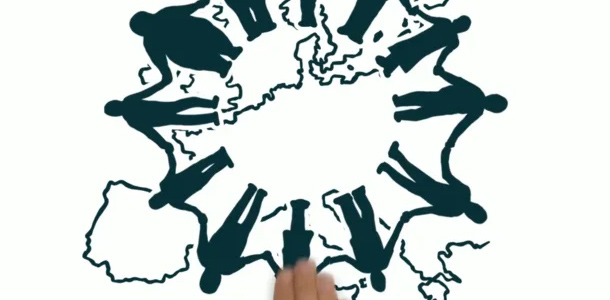TANDEM EUROPE


Creating a Multimedia Documentation
Interview with Séverine Lenglet, our European Media and Communications Officer.
Co-created by the European Cultural Foundation (Amsterdam) and MitOst e.V. (Germany) together with Fondazione Cariplo (Italy), Tandem Europe is a programme that strengthens Trans-European collaborations towards social change. The programme has developed special tools and methods to facilitate and develop these partnerships and collaborations. For the first round of Tandem Europe between 2015 and 2017, Citizens For Europe was in charge of documenting the stories of the participants involved in the collaboration programme and the methods they used to strengthen their partnerships. The aim was to showcase the Tandem methods to a broader audience, to share the learnings of the participants and to inspire other cultural managers to replicate those methods for their own collaboration.
What was the final output of this documentation?
We created the Methods in Action series for the Tandem website and produced multimedia formats that tell the stories of a few selected partnerships and showcase the most relevant Tandem methods. For this, we produced for example a short animation film, videos, podcasts, multimedia storytelling timelines mixing short videos, illustrations, texts and audios, as well as so called “diaporamas sonores”, an artistic format telling a story with sounds and photos edited like a short film.
How did you proceed to produce this documentation?
Between 2015 and 2017, the first round of Tandem Europe supported collaborations between 30 cultural managers of all EU member states and assisted their civil society organisations to build strategic partnerships throughout Europe. For example, a curator based in Athens worked with a theater director based in Berlin on developing a project about representation of migrants in their cities. While working on their common project, both partners shared their expertise and learned from each other.
My job was first to dig into the stories of the Tandem Europe collaborations and to find out which methods they used to strengthen their collaborations. Through skype, I interviewed the participants from various places in Europe. I tried to find out how they used and experienced the methods, which impact the methods had on their collaboration and work, and how we could tell their collaboration story and at the same time showcase the Tandem methods in an understandable and attractive way. With the results of these first interviews, I wrote scenarios for various multimedia formats.
Then the production phase started. We traveled to a few places to meet the participants, filmed and took photos of their collaboration work. We gathered audio and video interviews, we drew some illustrations…
What were the challenges?
When MitOst contacted us to start the documentation process, the Tandem Europe programme was already in a very advanced phase. We had to take into consideration that most of the projects/collaborations had already happened. That’s why we could not always go on site to film or photograph the collaborative projects. We had therefore to gather the footage produced by the participants themselves all over Europe. This was a challenging coordination. And for the editing of our multimedia formats, we had to rely on the images that the participants took or filmed themselves, in some cases only with their smartphones. The quality of the gathered footage was very different. The challenge later was to make it look good and professional anyway.
How did the documentation process influence the quality of the Tandem Europe programme?
The complexity of this documentation lied in finding a way to tell the journey of the participants’ collaboration and their project, however keeping the focus on the selected Tandem methods. Most of the participants wanted to talk about the final outputs of their collaboration more than on the collaboration process itself. It was also sometimes difficult for some participants to reflect and express how they used a specific method. Through this long process, I realised that we also supported the participants to reflect on the methodology they used, on their partnership and on the Tandem programme in general.


